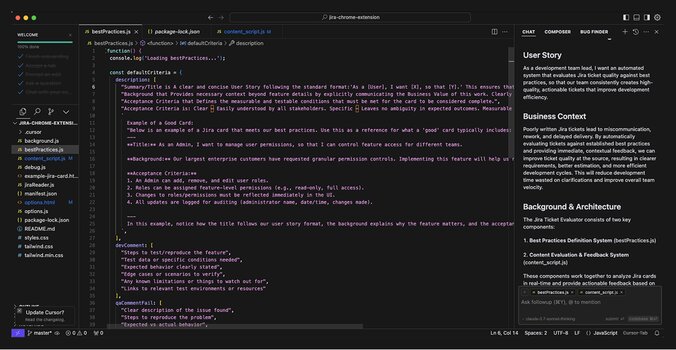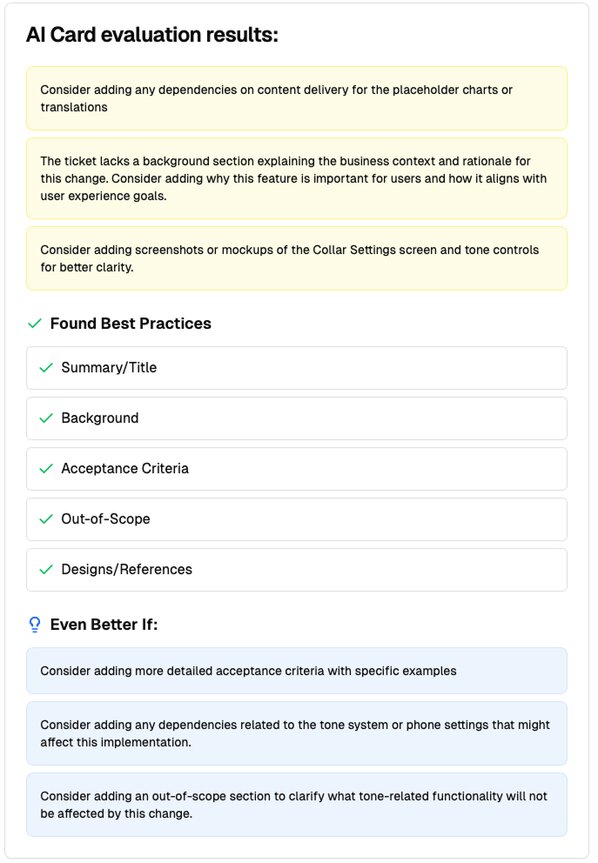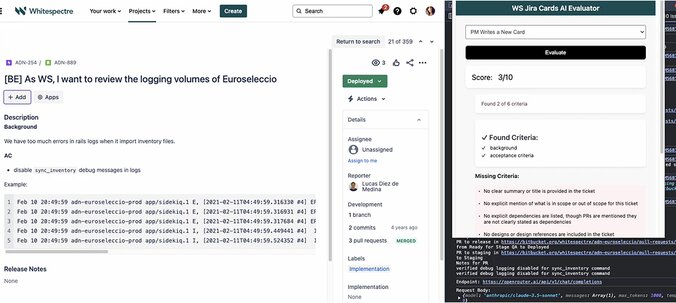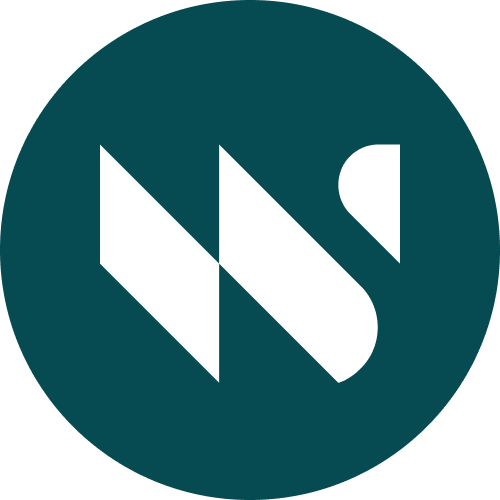Working Demo, So What? The Reality Gap Between AI Prototypes and Production
How rapid prototyping enabled by AI tools is transforming product development—and creating new challenges in the journey from proof-of-concept to production.

Four hours versus three weeks.
That's the stark difference we experienced at Whitespectre when comparing an AI-assisted prototyping approach to traditional development processes for experimental ideas. The key insight: projects that would have been impossible to prioritize due to resource constraints can now be explored through rapid prototyping.
Before AI-assisted tools, many innovative ideas remained unexplored simply because allocating developers, designers, and product managers to a speculative internal tool couldn't be justified. Now, product managers armed with tools like Cursor and ChatGPT can independently create functional prototypes to validate concepts without consuming significant team resources.
But a critical question emerges: what happens after you have that working demo? Does functional mean production-ready? We've learned there's a significant—and often invisible—gap between prototype and production-grade code.
This article explores our experience with the Jira Evaluator tool and reveals practical insights about the changing nature of product development in an era where anyone can build a working prototype.
The Promise of AI-Powered Product Development
Our Jira Evaluator project began with a clear challenge: to extract meaningful metrics and analysis from our Jira data, we needed to standardize our Jira cards. But this presented a classic internal tooling dilemma—how to justify dedicating resources to an experimental project with uncertain ROI?
While we consistently foster experiments like this as part of our Whitespectre Labs internal product incubator, this kind of speculative tool would likely never get prioritized in the traditional product development model. The resource investment would be too substantial: assessing technical feasibility, creating wireframes, conducting stakeholder discussions, developing clickable prototypes, and finally allocating precious engineering resources. For resource-stretched teams, these kinds of experimental tools often remain just ideas.
AI-assisted development tools changed this equation completely. Using v0, Cursor, and ChatGPT, a single product manager built a working prototype in approximately four hours—unlocking a project that might not have been explored otherwise.
This represents a fundamental shift in what's possible for internal innovation. Rather than having to make difficult tradeoffs about resource allocation, we could validate the concept with minimal investment. If the experiment proved valuable, we could then make an informed decision about further development—and if not, we'd only invested a few hours rather than weeks of cross-functional time.
The Challenges
Despite the incredible speed and autonomy, our product manager encountered several challenges (some anticipated) in the prototype development process.

Effective communication: Our product manager’s Cursor prompt as part of demo creation.
Constraint-Setting, Not Just Goal-Setting
Effective communication with AI tools requires not just articulating what you want, but explicitly describing what you don't want to change. This mirrors an essential prompting principle: constraint-setting is as crucial as goal-setting.
Without clear boundaries, AI will make assumptions and introduce unexpected logic or design choices. The prototype development process taught us to be methodical about establishing constraints—a skill that product managers already possess from writing detailed requirements, but which takes on new importance when working with AI tools.
The Troubleshooting Wall
Perhaps the most frustrating limitation was hitting the wall of technical knowledge when things broke. While AI tools could generate code quickly, they weren't effective at helping troubleshoot complex technical issues.
Particularly challenging were third-party integrations like API connections, where the AI lacked sufficient context or up-to-date knowledge to resolve problems. This points to a critical limitation: even with powerful AI tools, technical expertise remains necessary, especially for integration work and debugging complex issues.
Dealing with these issues meant getting a developer involved.

Endless tweaking: One of several different UIs tried during the prototyping process.
The Rabbit Hole of Endless Tweaking
Having complete control over every detail created another unexpected challenge—the rabbit hole of endless tweaking. With the power to change anything at a moment's notice, it became tempting to continuously refine minor details simply because it was possible.
The prototype development process revealed how easy it is to lose sight of the bigger product vision while obsessing over refinements that don't matter at the prototype stage. The flexibility that makes AI tools powerful also makes them dangerous time sinks without proper discipline.

Challenging assumptions: An early version featured scoring removed after team feedback.
Missing the Valuable Friction
Perhaps most interestingly, we noticed the absence of valuable team pushback during the solo development process. The traditional product development cycle incorporates multiple perspectives, challenges assumptions, and catches edge cases through collaborative discussion.
When building with AI, this friction disappears. There's no one to question approaches, suggest alternatives, or identify blind spots. This highlights a fascinating paradox: while AI tools accelerate initial development, they temporarily remove the cross-functional collaboration that ultimately strengthens the product.
The prototype did, however, provide a concrete artifact for subsequent discussions, which proved more effective than attempting to align teams on abstract concepts.
The Technical Reality Check
Moving from prototype to production revealed several technical realities about AI-generated code. When our development team reviewed the Jira evaluator prototype, three issues immediately stood out: accumulated dead code from iterative prompting, security vulnerabilities like hardcoded API keys, and significant code duplication.
These issues reflect how AI tools approach development—optimizing for making things work quickly rather than architectural elegance. Each time the prototype was modified through new prompts, the AI would add functionality without properly cleaning up previous iterations. The result was a codebase that functioned but contained numerous remnants of its development journey.
Despite these challenges, approximately 30% of the prototype code proved salvageable. The core functionality and interface design translated well to production, while the implementation details needed significant refinement. This ratio seems typical for AI-generated prototypes—the conceptual work and basic structure provide value, but the technical implementation requires professional refinement.
For browser-based tools like our Jira evaluator, production-readiness concerns centered on three key areas:
1. Code simplification: Removing duplicated functionality and dead code paths that accumulated during iterative development
2. Security improvements: Eliminating hardcoded credentials and implementing proper configuration management
3. Privacy considerations: Auditing logs and data handling to ensure sensitive information wasn't being captured inappropriately
Interestingly, we found that using more structured prompting techniques with tools like Cursor significantly improved code quality. Rules and constraints specifically tailored to programming languages helped guide the AI toward better practices, though keeping an expert in the loop is still a must to reach a scalable production standard.
For straightforward applications like browser extensions, the architectural limitations of AI-generated code were less problematic. However, for more complex systems, the architectural decisions made during rapid prototyping would likely require more substantial revision before production deployment.
Unexpected Benefits and Insights
Despite the challenges, the AI-accelerated prototype development process yielded several unexpected benefits and insights.
Democratized Experimentation
The most significant organizational impact has been the democratization of technical experimentation. Team members with product knowledge but limited development skills can now create functional prototypes that would have been impossible before.
This has fundamentally changed expectations around idea validation. Previously, proposing a new concept might lead to a series of discussions about whether it merited investment. Now, the appropriate response is "spend a few hours on it and come back with something we can play with."
This shift is particularly transformative for product managers, who gain a powerful new tool for ideation and stakeholder discussions. The ability to quickly materialize concepts removes significant barriers to innovation, especially for internal tools that might otherwise never receive development resources.

Intuitive interface: The UX while the AI is re-analizing the card following some tweaks
User-Centric Technical Approaches
An interesting benefit emerged from building without a deep technical background: approaching problems from a user perspective rather than a developer perspective.
When creating interfaces or solving technical challenges, product managers naturally gravitate toward intuitive user-focused solutions rather than conventional technical implementations. This leads to designs that can be more aligned with user needs, highlighting how diverse perspectives enhance product development.
One example from our JIRA Evaluator tool was designing the settings page. Rather than using environment variables or configuration files (the typical developer approach), the prototype featured a simple settings page with a form field—immediately more intuitive for non-technical users. This approach gave users the flexibility to use their own OpenAI accounts, addressing data privacy concerns and putting them in control of their API processing and usage.
The Rising Value of Requirement Definition Skills
An unexpected insight from our experience was how product management skills in requirement definition translate directly to effective AI interaction. The ability to articulate clear, structured requirements—long valued in traditional development—has essentially become a new form of programming.
Working with AI tools requires the same precision in describing desired outcomes and constraints that makes for good Jira tickets or user stories. This represents a significant advantage for product managers and others skilled in breaking down complex needs into clear, actionable specifications.
"Requirement writing as a new kind of programming language" became our shorthand for this phenomenon. Those with experience in structured thinking and clear problem framing found themselves naturally equipped to direct AI tools effectively. This suggests that as AI democratizes technical creation, the differentiating factor shifts from coding ability to the clarity of thought and communication—a fascinating inversion of traditional technical hierarchies.
Enhanced Communication
The ability to quickly produce a functional prototype dramatically improved communication effectiveness. Abstract ideas transformed into tangible interfaces that stakeholders could interact with and provide feedback on.
This improved communication extends to all parties—from technical teams to business leaders—allowing everyone to engage with a concrete implementation rather than abstract descriptions. For internal tools especially, this accelerates the feedback loop and increases stakeholder buy-in.
The New Collaborative Process
The AI-accelerated development process doesn't eliminate traditional roles but transforms how they interact and when they engage in the process.
Shifting Collaboration Patterns
The AI-accelerated prototype transforms traditional collaboration by providing a more tangible starting point. While our established planning process has always been effective for standard development, these rapid prototypes offer a better approach for experimental concepts. Team discussions benefit from having a working artifact everyone can interact with, making abstract ideas immediately concrete.
This represents an additional tool in our collaboration model. For certain types of projects—particularly exploratory ones—teams can evaluate a functioning prototype before committing significant resources. This approach doesn't replace thoughtful planning but adds another option to our toolkit and helps give us better estimates when it comes to building the real thing.
Importantly, these prototypes serve primarily as proof-of-concept demonstrations. Rather than trying to refactor prototype code into production systems, the team often rebuilds from scratch using the validated concept as a guide. The prototype's value lies in validating the idea and creating a shared reference point that accelerates decision-making, not in providing production-ready code.
When to Bring in Specialists
A critical skill in this new paradigm is knowing when to involve specialists. The autonomy of AI-assisted development can create a false sense of self-sufficiency. Working in isolation without pushback can make developers or product managers feel like they're always right—a dangerous trap.
The prototype development experience taught us to establish clear stopping points and recognize when to seek feedback. Self-discipline becomes crucial: knowing when a prototype has reached sufficient maturity to benefit from broader input, and when continuing solo development risks breaking functional elements or going down unproductive paths.
This highlights a crucial insight: the prototype should be a starting point for collaboration, not a replacement for it.
Impact on Project Timelines
The acceleration of the initial prototyping phase fundamentally changes project economics. Ideas that would never have been explored due to resource constraints can now be quickly validated or rejected.
Previously, the decision to create a prototype would involve careful planning: would we learn enough to justify the development cost? Now, with prototype development taking hours instead of weeks, the calculus has shifted. A few hours of exploration is almost always worth the potential insight gained.
This dramatically lowers the barrier to experimentation and allows teams to explore more ideas with less investment—particularly valuable for internal tools, proofs of concept, and speculative features.
Practical Takeaways for Teams
Based on our experience, here are key takeaways for different team members exploring AI-accelerated development:
For Product Managers:
- Start with the right problem: AI tools can accelerate validation but won't fix a misidentified problem. Before diving into prototyping, ensure you're solving a genuine user or business need. The most elegant solution to the wrong problem remains worthless.
- Set clear boundaries for your prototype: Define the scope and establish clear stopping points to avoid the endless tweaking trap. Know when your prototype has achieved its goal of demonstrating the concept.
- Recognize the limits of technical knowledge: Be prepared to hit troubleshooting walls and know when to involve technical experts, particularly for third-party integrations and complex bugs.
- Practice constraint-setting in your prompts: Clearly define not just what you want the AI to do, but what you don't want it to change. This reduces unexpected behavior and improves output quality.
- Balance self-sufficiency with collaboration: While AI tools enable independent exploration, they can create a false sense of completeness. Prioritize diverse perspectives early in the process to strengthen concepts and identify blind spots before they become embedded in the solution.
For Developers:
- Re-evaluate the feature set: When transitioning from a prototype to production, start by simplifying. AI tools make it easy to implement numerous features quickly, but this can lead to an unstable foundation. Strip back to core functionality before building a more robust version.
- Assess what can be salvaged: Not all prototype code needs to be discarded. Evaluate which components can serve as a foundation for the production version. The quality of AI-generated code varies significantly based on the prompts and tools used—prototypes created with tools like Cursor from the start tend to produce more usable code when combined with right models and prompts.
- Implement proper version control: One of the biggest risks with AI-assisted development is the temptation to continuously iterate without structure. Establish version control using Git early and adhere to commit discipline rigorously. For features beyond the initial prototype, follow the standard development workflow of planning, validation, estimation, and implementation rather than continuing to build directly on the prototype.
- Conduct security audits: AI-generated code requires thorough security review. While functional, it may contain vulnerabilities or implement outdated security practices. Always perform a comprehensive security assessment before moving prototype code toward production.
- Align with team standards: When receiving a prototype from a product manager, assess how it aligns with your team's technical standards. Converting a working but non-standard prototype into production code that fits your architecture and coding standards should be approached methodically rather than piecemeal.
For Organizations:
- Lower the barrier to experimentation: Embrace the reduced cost of idea validation to explore more potential innovations, particularly for internal tools that might never otherwise get prioritized.
- Maintain cross-functional collaboration: Don't let the ability to create prototypes individually reduce valuable team interaction. The feedback process remains essential for quality outcomes.
- Adjust evaluation thresholds: When someone proposes an idea, the appropriate response is now "spend a few hours on it and come back with something we can play with." The cost/benefit analysis for prototyping has fundamentally changed.
- Create clear prototype-to-production pathways: Establish structured processes for transitioning validated prototypes into production projects. This includes criteria for assessment, required documentation, and guidelines for when to rebuild versus refactor prototype code.
- Recognize when prototypes are sufficient: Some internal tools and experiments may be valuable even without production-level polish. Identify when "good enough" is actually good enough for the intended purpose.
Conclusion
AI-powered development tools have fundamentally changed how teams can approach product development—enabling rapid experimentation, lowering barriers to technical creation, and transforming collaboration patterns.
However, our experience with the Jira Evaluator reinforces that human expertise remains essential. The gap between a working prototype and production-ready code is real, even if it's sometimes invisible to non-technical eyes.
The most effective approach blends the speed and autonomy of AI-assisted prototyping with the expertise and collaboration of cross-functional teams. Neither approach alone delivers optimal results—it's the thoughtful integration of both that leads to successful products.
As we continue to explore this new territory, one thing is clear: the question isn't whether to use AI tools or follow traditional development processes. It's how to combine the strengths of both to create better products, faster, without sacrificing quality.

